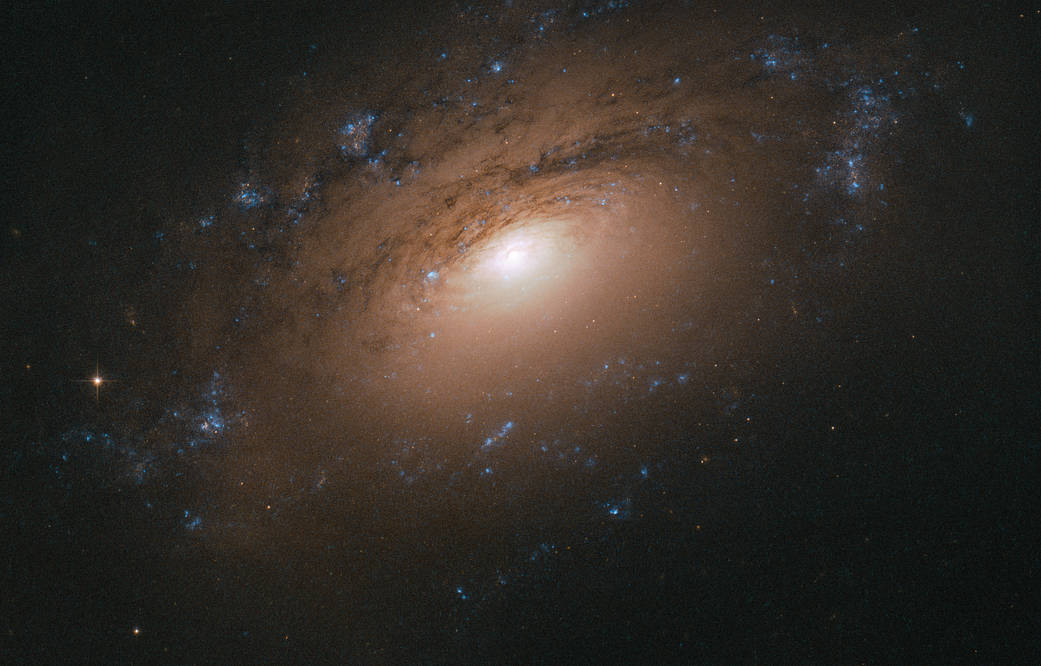哈勃太空望远镜拍下了一个由粒子组成的星系大杂烩
Every now and then, the NASA/ESA Hubble Space Telescope glimpses a common object — say, a spiral galaxy — in an interesting or unusual way. A sharply angled perspective, such as the one shown in this Hubble image, can make it seem as if we, the viewers, are craning our necks to see over a barrier into the galaxy’s bright center.
In the case of NGC 3169, this barrier is the thick dust embedded within the galaxy’s spiral arms. Cosmic dust comprises a potpourri of particles, including water ice, hydrocarbons, silicates and other solid material. It has many origins and sources, from the leftovers of star and planet formation to molecules modified over millions of years by interactions with starlight.
NGC 3169 is located about 70 million light-years away in the constellation of Sextans (the Sextant). It is part of the Leo I Group of galaxies, which, like the Local Group that houses our home galaxy, the Milky Way, is part of a larger galactic congregation known as the Virgo Supercluster.
Text credit: ESA (European Space Agency)
Image credit: ESA/Hubble & NASA, L. Ho
美国宇航局/欧洲航天局的哈勃太空望远镜不时地以一种有趣或不寻常的方式瞥见一个普通的物体,比如一个螺旋星系。一个角度尖锐的视角,就像这张哈勃照片所显示的那样,可以让我们看起来好像我们这些观察者,正在伸长脖子越过一道屏障去看银河系明亮的中心。
在NGC 3169的例子中,这个屏障是嵌在星系螺旋臂内的厚厚的尘埃。宇宙尘埃由一大锅粒子组成,包括水冰、碳氢化合物、硅酸盐和其他固体物质。它有许多起源和来源,从恒星和行星形成的残余物,到经过数百万年与星光相互作用而改变的分子。
NGC 3169位于距地球约7000万光年的六分仪星座内。它是狮子座星系群的一部分,就像我们的主星系银河系所在的本地星系群一样,它也是室女座超星系团的一部分。
资料来源:欧洲航天局
图片来源:ESA/Hubble & NASA, L. Ho

